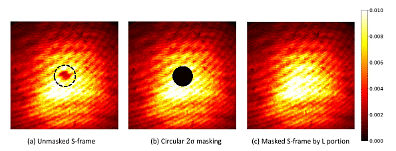
The scientists said the technique could reduce interference fringes in the absorption imaging of cold atoms by nearly 50 per cent.
Credit: PIB
Bengaluru: Scientists at the Raman Research Institute (RRI) have developed a technique that can help generate high-quality images during the study of ultracold atoms (atoms near absolute zero temperature).
The technique developed by a research group at the Bengaluru-based institute promises to discard about 50 per cent of the unwanted interference fringes in the images, which can help understand the atoms’ quantum mechanics-governed properties at cold temperatures better.
Near absolute zero temperatures, the original properties of atoms based on classical mechanics are replaced and governed by the laws of quantum mechanics that offer a possibility to study the atomic properties at such low temperatures.
Cold atoms of elements like sodium, potassium, and rubidium are commonly studied. Results from existing techniques, like imaging through fluorescence and absorption techniques, are limited by the fringes or dark-bright patterns that appear on the images. These patterns can also lead to inaccurate calculation of key parameters like the atom number and temperature, the Department of Science and Technology noted in a statement.
The new algorithm couples eigenface recognition (detecting the image of a person/object from a group of images based on the objects’ features) with a smart masking technique.
“While dealing with the cold atoms, it is necessary to calculate the Optical Density (OD) from which one can determine the temperature, size, density and other useful parameters,” Gourab Pal, a PhD student at the QuMix lab, RRI, said.
OD is the logarithmic subtraction of two frames, one containing the cold cloud (denoted as S) and the other, the probe light (denoted by L). Ideally, the two frames have identical interference fringes, which when logarithmically subtracted, can remove the fringes. Pal, the first author of the paper, noted that these frames do not showcase identical fringes in laboratory settings, making a de-fringing method critical to obtain a clean OD.
The paper, Efficient denoising of cold atom images using optimised eigenface recognition algorithm, was recently published in the journal Applied Optics.
The scientists said the technique could reduce interference fringes in the absorption imaging of cold atoms by nearly 50 per cent.
Saptarishi Chaudhuri, head, QuMix laboratory, RRI, and co-author of the study, said the absorption imaging technique was particularly useful in determining the density profile of cold and ultracold atoms where the number of atoms is small.